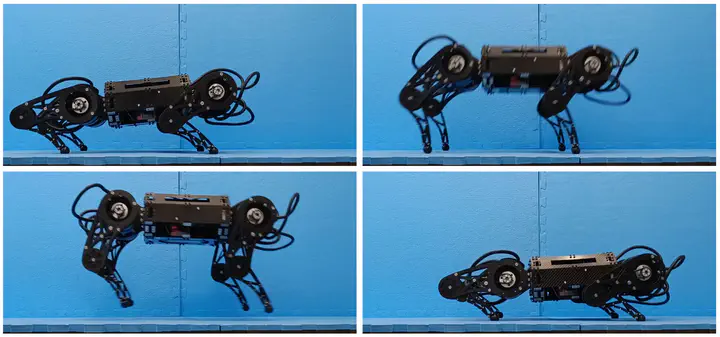
Abstract
This paper presents a bi-level optimization framework to concurrently optimize a quadruped hardware and control policies for achieving dynamic cyclic behaviors. The long-term vision to drive the design of dynamic and efficient robots by means of computational techniques is applied to improve the development of a new quadruped prototype. The scale of the robot and its actuators are optimized for energy efficiency considering a complete model of the motor, that includes friction, torque, and bandwidth limitations. This model is used to optimize the power consumption during bounding and backflip tasks and is validated by tracking the output trajectories on the first prototype iteration. The co-design results show an improvement of up to 87% for a single task optimization. It appears that, for jumping forward, robots with longer thighs perform better, while for backflips, longer shanks are better suited. To understand the trade-off between these different choices, a Pareto set is constructed to guide the design of the next prototype.